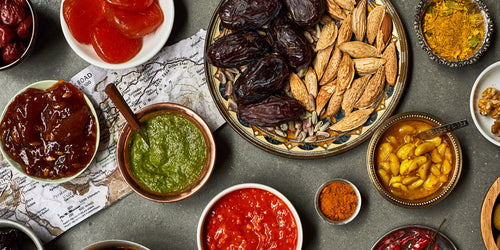Your Cart is Empty
These are boom times for Indian cookbooks. Not Indian in an instant books or So you’ve heard about this nice thing called turmeric books. I mean vivid, full-throated celebrations of spice and seasonal cooking. Texts that treat Indian cuisine not as some faraway flavor to be considered with temerity, or replicated with academic verisimilitude, but lived every day at home. Not ethnic food. Food, full stop.
Indian cookbooks are hardly new to the American market. But today’s confluence of big sellers are something distinct. For the most part, they aren’t restaurant books written by chefs. Nor do they present Indian cuisine as an immovable icon of authenticity. They are Indian American cookbooks, written by first- and second-generation authors of Indian descent who’ve wrestled with lifetimes of questions about identities and conflicting cultures, and taken family recipes into their own hands. The result is a sea change in the way we talk about Indian food, and the only authenticity that matters is the authenticity of an author’s voice.
In Vibrant India, star achaar maker Chitra Agrawal explores the vegetarian flavors of her mother’s hometown of Bangalore—and how to fit them into her busy life as a blogger-turned-Brooklyn-entrepeneur. In the gorgeously photographed Season, Nik Sharma tells story of a gay Indian immigrant reckoning with his out American self, while applying years of scientific training to add Indian flavors to dishes as diverse as deviled eggs and caprese salad. Mixed-race author and Plate Magazine editor Chandra Ram’s new Indian cookbook for the Instant Pot also lavishly applies Indian flavors to foreign foods like salmon and chocolate pudding, and in doing so, adds them to a new Indian American canon. For Atlanta chef Asha Gomez, the whole conceit of My Two Souths is her experience cooking as a Keralan and a Southerner; the cover isn’t adorned with a spread of curries and rice or little dishes of spices, but a fresh tomato pie, burnished in a glistening cast iron skillet.
This is a thrilling development for anyone who loves to read and loves to eat. These books take no shortcuts, nor do they water down flavors; even for those well versed in Indian cooking, they offer exciting new perspectives to try. I don’t want to say you haven’t had palak paneer until you’ve tried it with feta, as Priya Krishna’s mom makes it in the forthcoming Indian-ish…but the recipe will have you licking the bowl clean all the same.
Here are some examples of those flavors in action: a spread of five recipes from three cookbooks that come together to form an incredible meal. If you’ve never cooked an Indian dish in your life, this is a great place to start. And if you’ve been cooking Indian food all your life, you’ll probably still pick up something new.
An Indian American Feast
Kerala-Style Fennel Coconut Chicken Curry
Dosa Kitchen is all about South India’s favorite pancake: the dosa, made of fermented rice and lentils whisked into a batter, then griddled into shatteringly crisp, twangy crepes to fill and dip and scoop up everything. That includes this Kerala-style curry, which is great with or without dosas, and which applies the coastal state’s love of all things coconut to this delightfully potent, punchy chicken dish. Get the recipe.
Lamb and Date Biryani
You don’t need an Instant Pot to make any of the recipes in Chandra Ram’s Complete Indian Instant Pot Cookbook, but it sure speeds things up: this traditional Sindhi-style rice dish, cooked in Pakistan as much as India, comes together in less than an hour. Ram adds the sweet rhythm of saffron, dates, and cloves to the classic combination of lamb and dried fruit. Get the recipe.
Chickpea Chaat with Pomegranates and Cashews
Chaat is a street snack made all over India, a saucy, spicy riot of textures and temperatures that make it hard to stop eating. This version from Ram’s cookbook takes a lighter homestyle approach, which makes it the perfect side salad for any meal. Chickpeas, cucumbers, and pomegranate seeds form the base while bits of sev and crisp fried chana dal add heft and crunch. Get the recipe.
Beet Yogurt Raita
This tangy, cooling yogurt dip usually gets mixed up with cucumbers, mint, or chiles, but in this brilliant recipe, Vibrant India author Chitra Agrawal opts for shredded beets. Specifically, beets stir fried with mustard seeds, curry leaves, and coconut until tender and fragrant, then mixed with yogurt for a pretty pink-purple dip full of natural sweetness and a kick of tart lime. Get the recipe.
Apple, Ginger, and Coconut Hand Pies
Kadabu are sweet dumplings filled with anything from jaggery to ghee and coconut to cooked lentils, traditionally made in honor of the Hindu elephant god Ganesh. The dumplings are usually steamed or deep-fried, but here they’re baked, and filled with tender chunks of apples kicked up with gingery heat. The result is a dessert as nostalgic as a McDonald’s apple pie, but also entirely new. Get the recipe.












